FUTURE STYLE
|
Musical Editor Magic Score Music Notation Software for Professionals and Music Composers Windows platforms (Windows 95/98/Me/NT/2000/XP For Composers. Performers. Teachers . Students. Music Lovers . Music Professionals .... MagicScore is available in three versions: Maestro, Classic and School which differ in their functionality 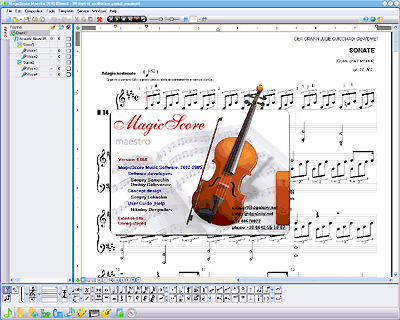 larger size Classic $37.95 Maestro $69.00 download (.zip) Classic download (.zip) Maestro The MagicScore software offers good capabilities which facilitate the creation of compositions , including polyphonic ones. Notes' palette 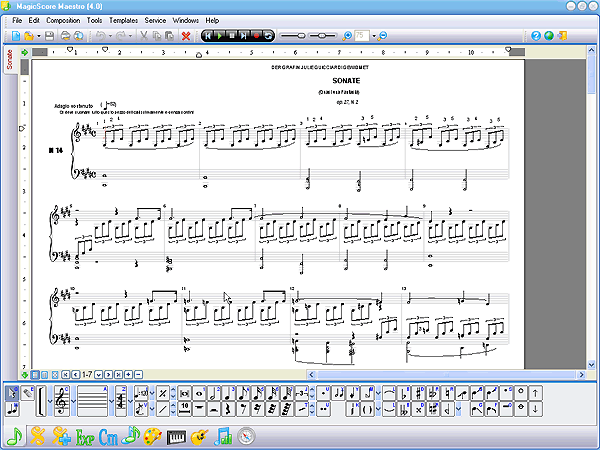 "Instrument List" 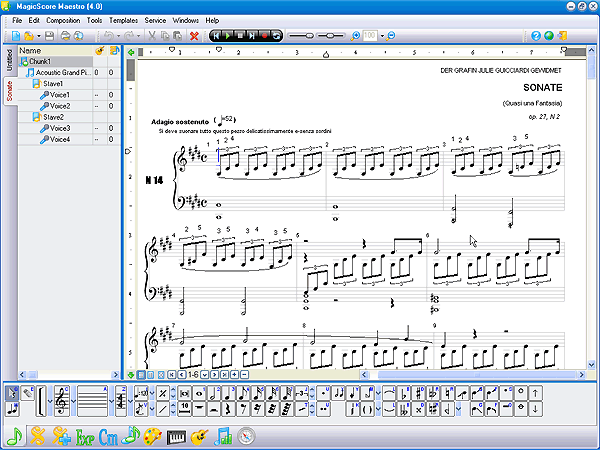 " Symbols" 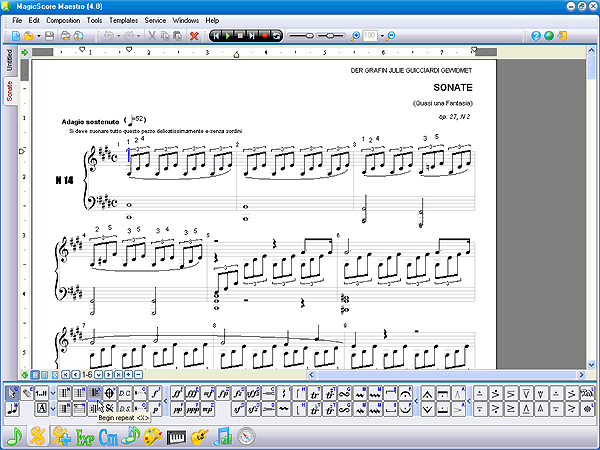 " Expanded" You can add your own sets of musical symbols, which will later let you add these symbols to the score without the necessity of drawing them again. 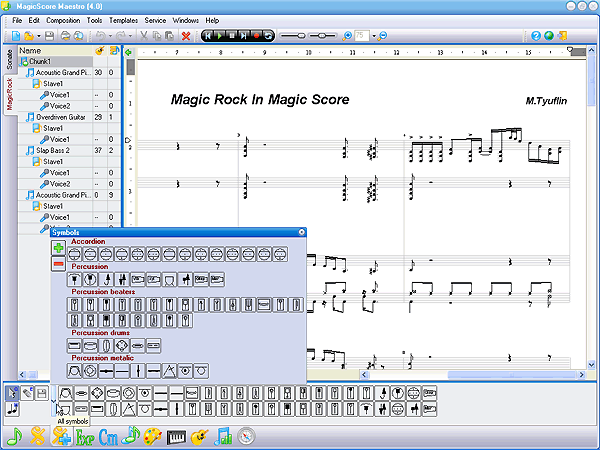 " Drums" You can add your own sets of musical symbols, which will later let you add these symbols to the score without the necessity of drawing them again.  " Chords" This music composing software allows you to enter chords or chord definitions by way of a special editor, to select chords from a list of user-defined chords and to create your own chords. 1. Adding chords and chord definitions using the editor. To add a chord or chord definition select the desired mode (notes or definitions), select the note and the chord properties, which will result in the program adding a chord according to the buttons pressed. 2. Adding notes or chord definitions via the list of user-defined chords. To add a chord or chord definition select the note and the chord from the list of the "Chords" tab. To access the full list of available chords, press the drop-down list arrow key. The full list is divided into groups. 3. Creating your own chords. To create a chord add the notes of the chord to the staff, select them and save giving the new chord and file each a name. The chord's name can be made of several words which allows you to display it in a more visualized way. 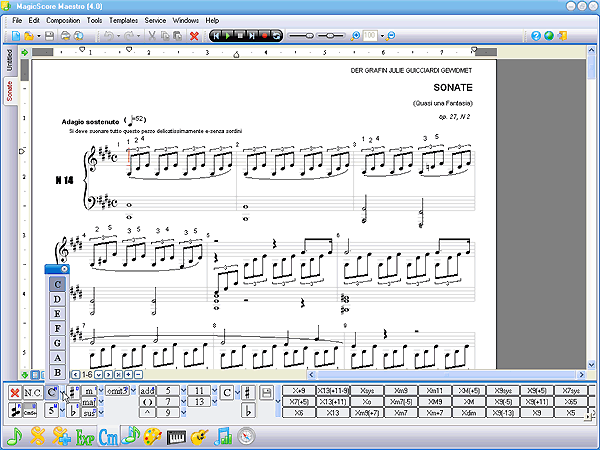 " Design" To design your music score you can use a large set of graphical elements. The "Design" tab in MagicScore also has buttons used for inserting pictures and changing the properties of the graphics. You can also set a display style for the current sheet or for all sheets. . 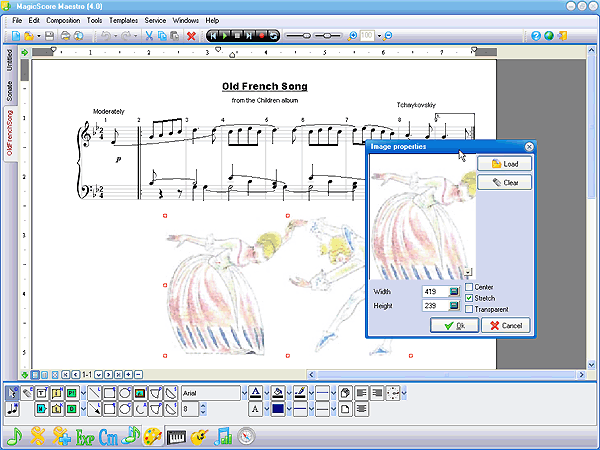 " Navigator" The MagicScore's "Navigator" serves to enhance the overall visual representation of and navigation within a musical piece. Information is represented by pages, measures, and entered data; rehearsal marks are also indicated. The current cursor location corresponds to the current location within the score. 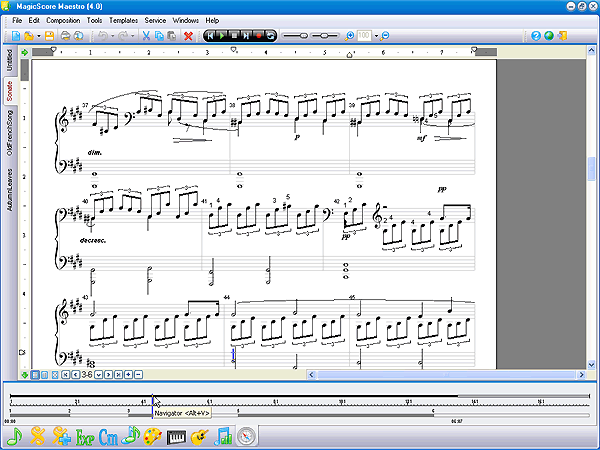 " Dynamic Expressions" The MagicScore's "Musical terms list" serves not only for quick terms entry, but also for setting the tempo and dynamics of the piece. 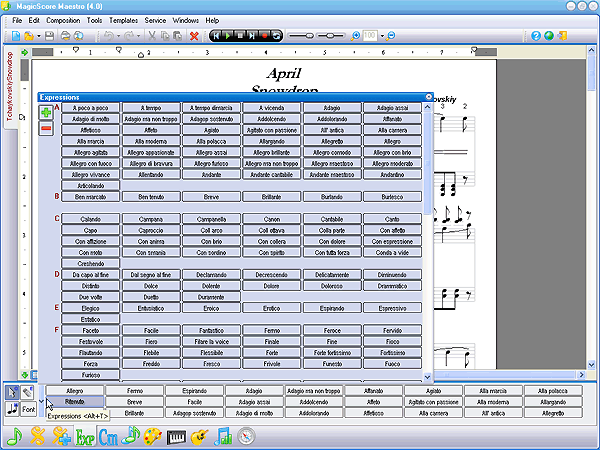 " Virtual Piano Keyboard" The MagicScore's "Musical terms list" serves not only for quick terms entry, but also for setting the tempo and dynamics of the piece. 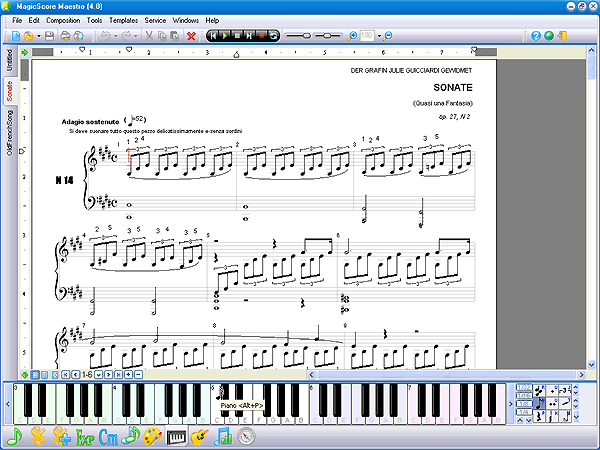 " Virtual Guitar Deck" Guitar players will find the virtual guitar deck from MagicScore Maestro a useful tool for entering chords. You have to select the duration for the notes you add. Chords are entered in the specified location in the measure by clicking the desired guitar strings and frets. 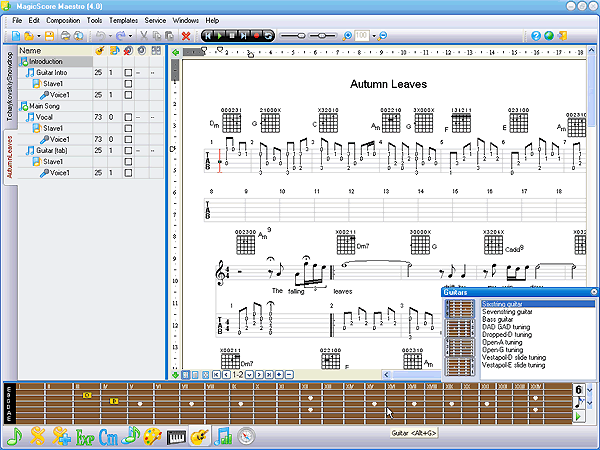 " Velocity Editor" In MagicScore there is a special velocity editor that allows you to adjust notes velocities and displays velocity in MIDI terms (0 - 127 values). The value is affected by dynamics symbols (such as crescendo, forte, etc.) the moment they are added to the score, but the editor allows you to adjust it. It is also possible to manually recalculate the velocity depending on the crescendo, forte and other musical symbols. 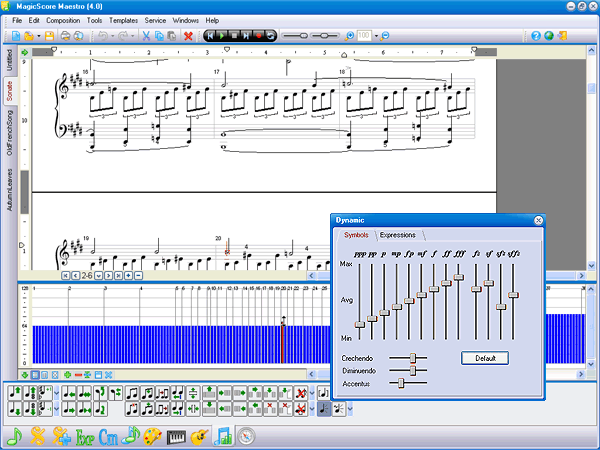 " Play Back Editor" It displays data by the pitch scale; every note's width is proportional to its duration and is presented by two values. The first value indicates the position and duration of the standard note representation. The second indicates the values of the position and duration that will be used at play back; it may be affected by the arpeggio, grupetto and other symbols if they are added to the score, but the editor allows you to adjust it. You can also manually recalculate the real performance of the notes depending on the arpeggio, grupetto and other symbols. 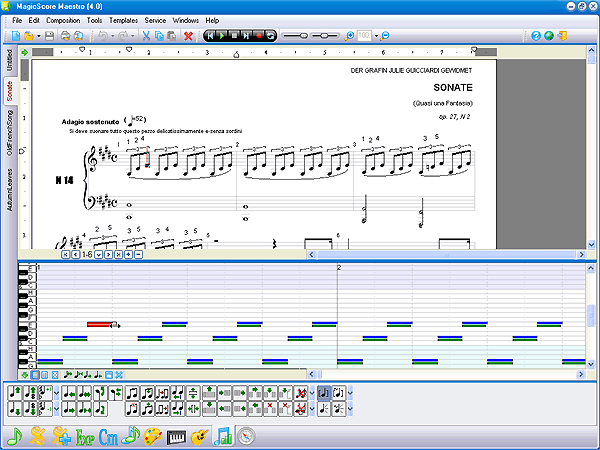 " Recording from an external MIDI device" If you have a MIDI controller (keyboard, synthesizer, etc.) connected to your computer, you can record scores in real time, with help of MagicScore music notation program. You can easy select and configure the input device that will be used for data receiving. 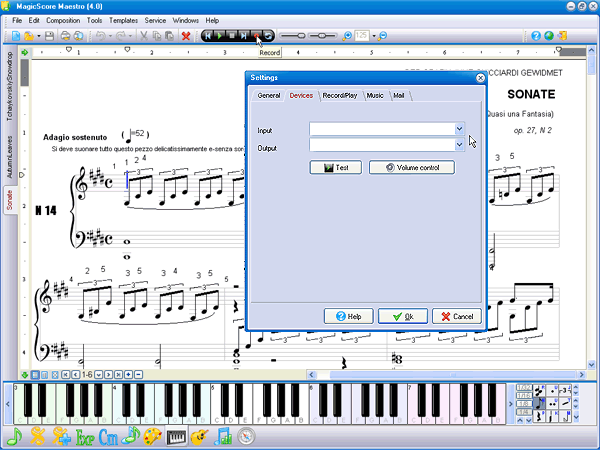 " Import to and export from MusicXML MIDI and Karaoke" You can use this music notation program for reading data from MusicXML, MIDI and Karaoke files. Prior to recording you are to choose whether you want your tracks recorded on one sheet or on separate sheets and set the amount of quantization (adjusting the start times of notes and/or note durations recorded from MIDI). It is also possible to save music scores as MusicXML, MIDI or Karaoke files. 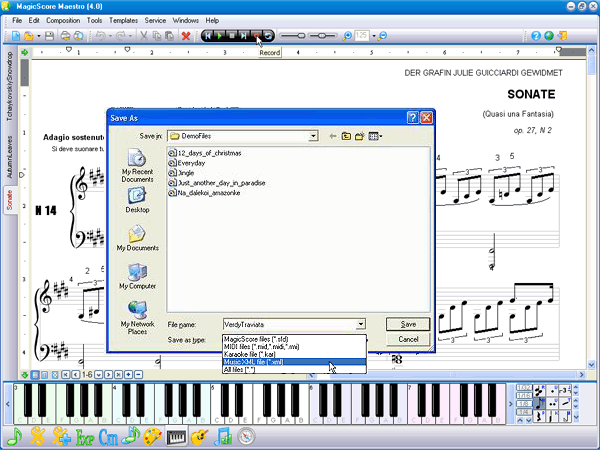 " Export to graphical files (BMP, WMF, GIF, JPEG)" You can export data as graphical files. This MagicScore feature lets the user prepare music score booklets, books, articles for music magazines, etc. It is possible to export music as BMP, GIF, JPEG or Metafile, and configure export settings. 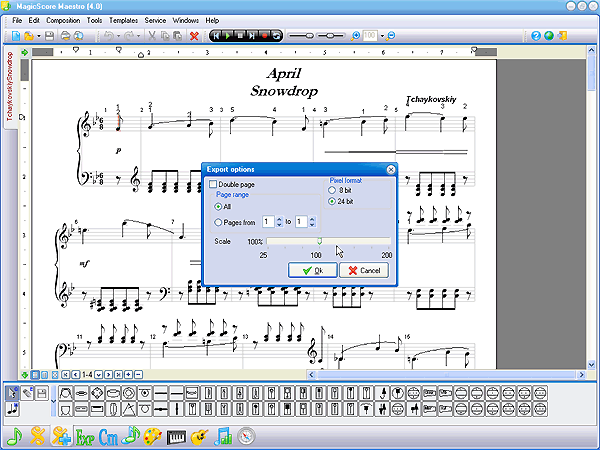 " Microtonal" Using microtonal in MagicScore allows you to more precisely define a note's pitch. You have at your disposal several styles of micro keys symbol representation which correspond to different microtonal step. 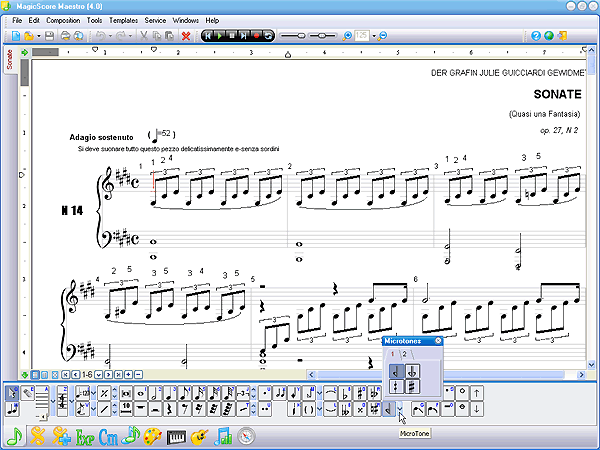 |
|
MusicalEditor |
advanced technologic sound magazine 2006 April issue 148
|
